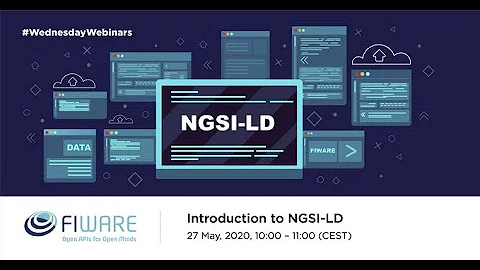Where do @Context objects come from
Solution 1
You can write your own injection provider and plug that into Jersey - look at SingletonTypeInjectableProvider and PerRequestTypeInjectableProvider - extend one of these classes (depending on the lifecycle you want for the injectable object) and register your implementation as a provider in your web app.
For example, something like this:
@Provider
public class MyObjectProvider extends SingletonTypeInjectableProvider<Context, MyObject> {
public MyObjectProvider() {
// binds MyObject.class to a single MyObject instance
// i.e. the instance of MyObject created bellow will be injected if you use
// @Context MyObject myObject
super(MyObject.class, new MyObject());
}
}
To include the provider in your web app you have several options:
- if your app uses classpath scanning (or package scanning) just make sure the provider is in the right package / on the classpath
- or you can simply register it using META-INF/services entry (add META-INF/services/com.sun.jersey.spi.inject.InjectableProvider file having the name of your provider class in it's contents)
Solution 2
I think I may be on to something...and if this works, Martin should get partial credit. :)
It appears that the @Provider class must implement the com.sun.jersey.spi.inject.Injectable<T> interface. However, I'm not sure that this is enough to actually have the @Context be injected. What's missing, is that we have to tell the ResourceConfig object of the web app about the @Provider. In the context of what I'm trying to do, and taking hints from neo4j-server, the remaining work boils down to:
- extending com.sun.jersey.spi.container.servlet.ServletContainer, and overriding the configure method:
@Override protected void configure(WebConfig wc, ResourceConfig rc, WebApplication wa) { super.configure( wc, rc, wa ); Set<Object> singletons = rc.getSingletons(); singletons.add(new MyObjectProvider()); }
- specifying that this container must be used in the web.xml deployment descriptor:
<servlet> <servlet-name>JAX-RS Servlet Container</servlet-name> <servlet-class>com.blah.MyServletContainer</servlet-class> </servlet>
Related videos on Youtube
Kricket
Corporate tech drone by day, basically a full-stack developer merging into software architect. In my free time I raise my two kids, play Ultimate Frisbee and try to help the French with their eengleashe.
Updated on September 15, 2022Comments
-
Kricket over 1 year
I've been searching everywhere, but can't seem to find a clear answer...
What is the mechanism whereby a server (glassfish for my problem) injects actual objets that are annotated with @Context? More specifically, if I wanted to write a class that did something like:
@Path("/") public class MyResource { @GET public String doSomething(@Context MyObject obj) { // ... } }then how would I do it? Where is it that the MyObject is instanciated, who does it, and how?
Edit: I've seen stuff like the following:
Using @Context, @Provider and ContextResolver in JAX-RS
http://jersey.576304.n2.nabble.com/ContextResolver-confusion-td5654154.html
However, this doesn't square with what I've seen, e.g. in the constructor of org.neo4j.server.rest.web.RestfulGraphDatabase, which has the following signature:
public RestfulGraphDatabase( @Context UriInfo uriInfo, @Context Database database, @Context InputFormat input, @Context OutputFormat output, @Context LeaseManager leaseManager ) -
 Ludwig Magnusson almost 12 yearsDoes these documents say how to write such functionallity yourself? Which I understood was the question.
Ludwig Magnusson almost 12 yearsDoes these documents say how to write such functionallity yourself? Which I understood was the question. -
 Ryan Stewart almost 12 yearsYou don't. It's for framework components. If you want dependency injection, look for a DI container, like Spring.
Ryan Stewart almost 12 yearsYou don't. It's for framework components. If you want dependency injection, look for a DI container, like Spring. -
 smcg almost 12 yearsAren't link-only answers frowned upon, since the linked site's contents can change?
smcg almost 12 yearsAren't link-only answers frowned upon, since the linked site's contents can change? -
Martin Matula almost 12 yearsOh, no - you don't need to do that. I've edited my answer to show how to register your provider.
-
justin almost 9 yearsIf you're subclassing javax.ws.rs.core.Application, you can register the provider with
this.getSingletons().add(new MyObjectProvider());in your Application's constructor. -
 David Berg over 8 yearsThe links are broken.
David Berg over 8 yearsThe links are broken. -
elanh over 8 years
-
elanh over 8 yearsThe classes were removed from version 2.0+
-
Alex Theedom over 6 yearsCorrect. You can only inject the 12 allowable object instances as listed here: readlearncode.com/java-ee/…












